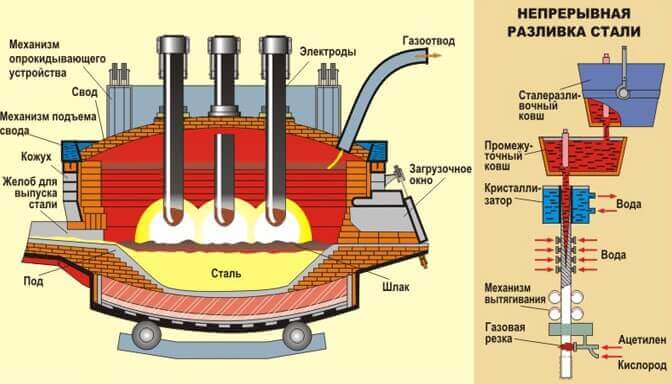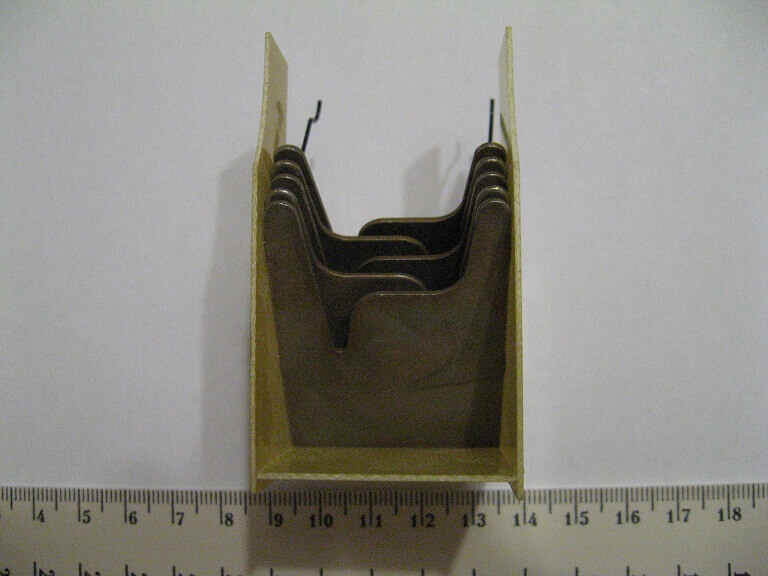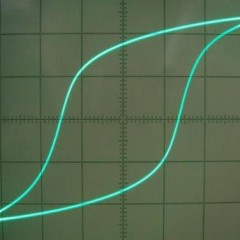What is an electric arc and how does it arise
Arc formation, its structure and properties
Imagine that we are conducting an experiment in a laboratory. We have two conductors, for example, metal nails. We point them to each other at a short distance and connect the terminals of the regulated voltage source to the nails. If you gradually increase the voltage of the power source, then at a certain value, we will see sparks, after which a stable glow like a lightning is formed.
Thus, one can observe the process of its formation. The glow that forms between the electrodes is plasma. In fact, this is the electric arc or the flow of electric current through the gas medium between the electrodes. In the figure below you see its structure and the current-voltage characteristic:
And here are the approximate temperatures:
Why an electric arc occurs
Everything is very simple, we examined in an article about electric fieldas well as in the article on charge distribution in the conductorthat if any conductive body (steel nail, for example) is introduced into an electric field, charges will begin to accumulate on its surface. Moreover, the smaller the bending radius of the surface, the more they accumulate. In simple terms, charges accumulate on the tip of a nail.
Between our electrodes, air is gas. Under the influence of an electric field, its ionization occurs. As a result of all this, conditions arise for the formation of an electric arc.
The voltage at which the arc occurs depends on the specific medium and its condition: pressure, temperature and other factors.
Interesting: according to one version, this phenomenon is so called because of its shape. The fact is that in the process of burning a discharge, the air or other gas surrounding it warms up and rises, resulting in a distortion of a rectilinear shape and we see an arc or arch.
To ignite the arc, you must either overcome the breakdown voltage of the medium between the electrodes, or break the electric circuit. If there is a large inductance in the circuit, then, according to the laws of switching, the current in it cannot be interrupted instantly, it will continue to flow. In this regard, the voltage between the disconnected contacts will increase, and the arc will burn until the voltage disappears and the energy accumulated in the magnetic field of the inductor is dissipated.
Consider the conditions of ignition and combustion:
There should be air or other gas between the electrodes. To overcome the breakdown voltage of the medium, a high voltage of tens of thousands of volts will be required - this depends on the distance between the electrodes and other factors. To maintain arc burning, 50-60 volts and a current of 10 amperes or more are sufficient. Specific values depend on the environment, the shape of the electrodes and the distance between them.
Harm and fight with her
We examined the causes of the occurrence of an electric arc, now let's look at how much harm it does and how to extinguish it. An electric arc damages the switching equipment. You noticed that if you turn on a powerful electric device in the network and after some time pull the plug out of the socket, a small flash occurs. This arc is formed between the contacts of the plug and the outlet as a result of an open circuit.
Important! During the burning of an electric arc a lot of heat is generated, its burning temperature reaches values of more than 3000 degrees Celsius. In high voltage circuits, the arc length reaches a meter or more. There is a danger of both harming human health and the condition of the equipment.
The same thing happens in the light switches, other switching equipment among which:
- circuit breakers;
- magnetic starters;
- contactors and stuff.
In devices that are used in 0.4 kV networks, including the usual 220 V, they use special protective equipment - arcing chambers. They are needed to reduce the damage done to contacts.
In general, the arcing chamber is a set of conductive partitions of a special configuration and shape, fastened by walls of dielectric material.
When the contacts are opened, the formed plasma bends towards the arcing chamber, where it is disconnected into small sections. As a result, it cools and damps.
In high-voltage networks use oil, vacuum, gas switches. In the oil switch, the suppression occurs by switching contacts in the oil bath. When burning an electric arc in oil, it decomposes into hydrogen and gases. A gas bubble is formed around the contacts, which tends to break out of the chamber at a high speed and the arc cools, since hydrogen has good thermal conductivity.
In vacuum circuit breakers, gases are not ionized and there are no conditions for arc burning. There are also switches filled with high pressure gas. With the formation of an electric arc, the temperature in them does not increase, the pressure increases, and because of this, the ionization of gases decreases or deionization occurs. Promising areas are considered SF6 circuit breakers.
It is also possible to switch at zero AC.
Useful application
The considered phenomenon has found a number of useful applications, for example:
- Lighting. For example, discharge lamps (DRL, xenon and other types). If you add salts of certain metals to the electrodes, the color of the electric arc will change.

- Arc welding. When the electrode touches the surface of the metal, a high current flows, which heats the metal. When you tear off the electrode, the current cannot be interrupted, the heated surfaces emit the electrodes and an arc arises. When melting metal welded surfaces and melting the electrode itself, it is possible to join two parts or cut them. There are various types of welding, for example, using electrodes or gas - carbon dioxide or argon. It is used everywhere and has made a huge contribution to residential and industrial construction.

- Arc melting. The electric arc depends on the electrical parameters of the power sources, so you can control its burning. Due to the high temperature, it is possible to melt a large number of metals.

Finally, we recommend watching a useful video on the topic of the article:
Now you know what an electric arc is, what are the causes of this phenomenon and possible fields of application. We hope that the information provided was understandable and useful for you!
Related materials:














